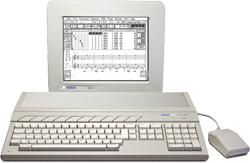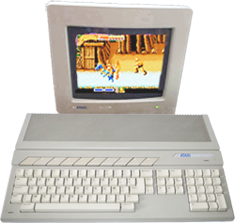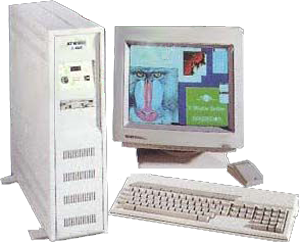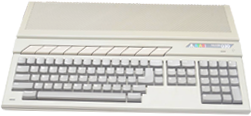The Business Line of Atari ST Computers: Mega ST Series
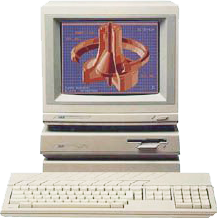
Released in 1986, the Atari Mega ST was a powerful 16-bit personal computer aimed at the business market. The Mega ST gained popularity in desktop publishing (DTP), CAD, and MIDI music production, and sold especially well in Germany. The Mega ST line paired seamlessly with Atari’s laser printers, making it one of the most cost-effective DTP solutions of its time.
- Launch Price: $1,199 (equivalent to ~$3,055 in 2023 money)
- Estimated Units Sold: ~280,000
![]() AT A GLANCE
AT A GLANCE
The Mega ST line includes the MEGA 1, MEGA 2, and MEGA 4 models, featuring respectively 1,2, or 4 MB of RAM on board.
- Available models: Mega 1, Mega 2, and Mega 4 (with 1 MB, 2 MB, and 4 MB of RAM)
- Based on the Motorola 68000 CPU @ 8 MHz
- Mouse-driven GEM GUI via TOS operating system
- High-quality detached mechanical keyboard and mouse included
- Built-in 3.5-inch floppy drive (720 KB)
- An optional blitter coprocessor for faster graphics (included in some models)
- Three-voice Yamaha sound chip for music and effects
 Operating System: TOS (The Operating System)
Operating System: TOS (The Operating System)
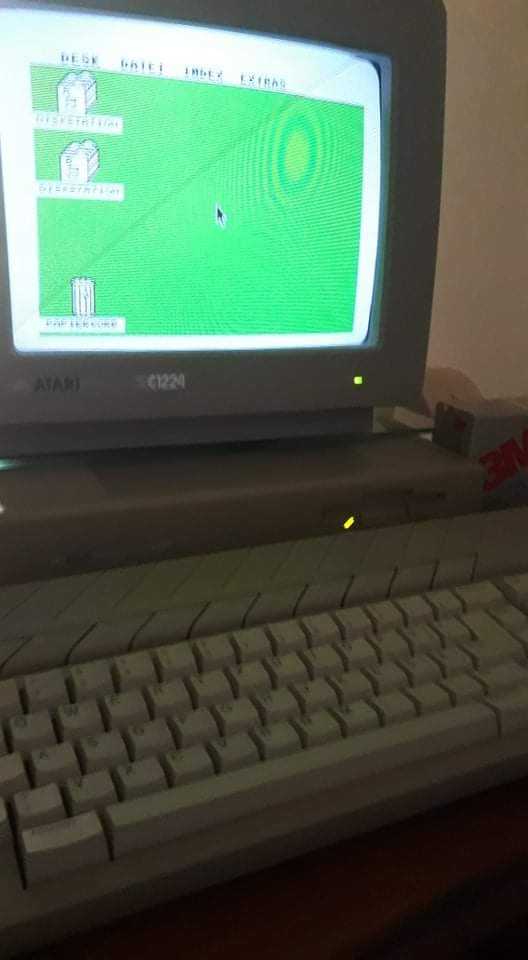 The Atari ST was one of the first consumer computers to use a bitmapped color GUI. The Mega ST line came with either:
The Atari ST was one of the first consumer computers to use a bitmapped color GUI. The Mega ST line came with either:
-
TOS 1.02 (Mega TOS)
- ROM Date: April 22, 1987
- Supports real-time clock and blitter chip
-
TOS 1.04 (Rainbow TOS)
- ROM Date: April 6, 1989
- Improved file selector and bug fixes
- MS-DOS-compatible disk formatting
 Display & Graphic Modes
Display & Graphic Modes
The ST line supports monochrome, color, and high-resolution monitors.
- 512-color palette, displaying:
- 16 colors @ 320×200
- 4 colors @ 640×200
- 2 colors @ 640×400 (monochrome)
- Compatible with monochrome, color, and high-res monitors
- Blitter chip (PLCC socket) included in select models for accelerated graphics
![]() Audio Capabilities
Audio Capabilities
The Atari ST line uses the Yamaha "Programmable Sound Generator" chip. Audio performance was significantly upgraded in the later STE models.
-
Yamaha YM2149F PSG
-
3-voice programmable sound
-
Mono audio output (Stereo supported in later models: STE, TT, Falcon)
-
Built-in MIDI IN/OUT ports – a major feature for musicians and studios
 I/O Ports
I/O Ports
- 2 DE-9 male mouse/joystick ports
- Monitor port (13-pin DIN)
- DB25 male RS-232c serial port
- DB25 female Centronics printer port
- ACSI (similar to SCSI) DMA port (19-pin D-sub)
- External Floppy Drive Port (14-pin DIN)
- 2 MIDI ports (5-pin DIN)
- ST cartridge port (for 128 KB ROM cartridges)
- Real-time clock
 Monitor Compatibility
Monitor Compatibility
Native support for:
- Atari mono and color monitors
- TVs via SCART (RGB)
- 15 kHz VGA monitors (with adapter)
- Modern HDMI monitors (with upscaler hardware)
Note: STFM models include a TV modulator, but the output is of low quality.
 Expansions & Upgrades
Expansions & Upgrades
- TOS upgrades (up to 2.06 with mod)
- RAM upgrades (up to 4 MB)
- Gotek USB floppy emulator
- SD-based hard drives (e.g., UltraSatan, ACSI2STM)
- 1.44 MB floppy support (requires additional board)
- Monochrome VGA adapters for better monitor support
Emulators
The Mega ST line could emulate other systems using expansion hardware:
- PC Dito, PC-Speed (NEC V30)
- AT-Speed (Intel 80286)
- ATonce-386SX (Intel 80386SX)
- Spectre GCR – Macintosh emulation
 Related Models: Mega STE Model
Related Models: Mega STE Model
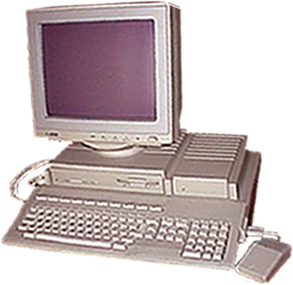 The Mega STE, the last model in the ST line, offered substantial upgrades:
The Mega STE, the last model in the ST line, offered substantial upgrades:
- Motorola 68000 CPU @ 16 MHz (switchable to 8 MHz for compatibility)
- TOS 2.00 preinstalled
- Improved sound, 1.44 MB floppy drive, and network port
- Dual-bus design (16-bit external, 32-bit internal)
- VME expansion slot and 68881 FPU support
- Housed in the Atari TT case
■ Atari Mega ST
BinaryValue.com (c)







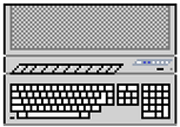







 TOP-10 APPS
TOP-10 APPS TOP-30 GAMES
TOP-30 GAMES